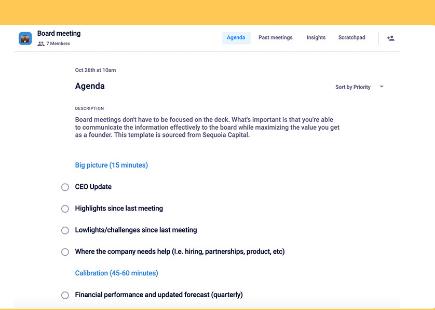What Must Be Included in Effective Meeting Minutes?
Effective meeting minutes are a crucial tool for ensuring that meetings lead to action and accountability. They serve as an official record that can be referred back to for clarity on decisions and tasks assigned. Below, we discuss the essential elements that must be included to create clear, useful, and action-oriented meeting minutes.

Date, Time, and Location
Document the logistics. Every set of meeting minutes must start by recording the date, time, and location of the meeting. This information sets the context for the decisions made and provides a chronological record for future reference. For instance, if your team meets weekly, having the specific date and time can help track progress on decisions week over week.
Attendees and Absences
List who was there and who wasn’t. Including a list of attendees as well as noting who was absent is crucial. This not only shows who agreed to or debated certain points but also helps in understanding the weight and representation behind each decision. For example, if a major decision was made without the presence of a key stakeholder, this should be noted for future consideration.
Agenda Items
Clearly outline what was discussed. Each agenda item discussed during the meeting should be noted along with a brief summary of the discussion. This doesn't need to be extensive but should capture the essence of what was talked about, highlighting any key points or disagreements that arose. For high-efficiency teams, focusing on the outcomes related to each agenda point helps in keeping track of meeting productivity.
Decisions Made
Emphasize the decisions. One of the most critical components of meeting minutes is the documentation of decisions made. This should include what the decision was, who made it, and any actions that need to be taken as a result. Recording decisions with clear outcomes helps in tracking accountability and ensures that all team members understand their responsibilities.
Action Items and Assignments
Detail next steps. Every action item that comes out of a meeting should be recorded in the minutes with details about what needs to be done, who is responsible for completing it, and the deadline for its completion. For example, if the team decides to launch a new marketing campaign, the minutes should specify who will lead the campaign, the steps they need to take, and by when they need to start. This clarity prevents tasks from falling through the cracks and keeps team members accountable.
Deadlines and Dates for Follow-up
Set timelines for review. It is important to record any deadlines discussed and the dates for follow-up meetings. This helps in maintaining momentum on projects and ensures that everyone knows when they will need to report on their progress or next steps.
In conclusion, meeting minutes are not merely a record of what was discussed; they are a blueprint for action and a historical document that helps maintain continuity in operations. For more insights into crafting effective meeting minutes that drive results and accountability, check out detailed guidelines on what should be included in meeting minutes.
